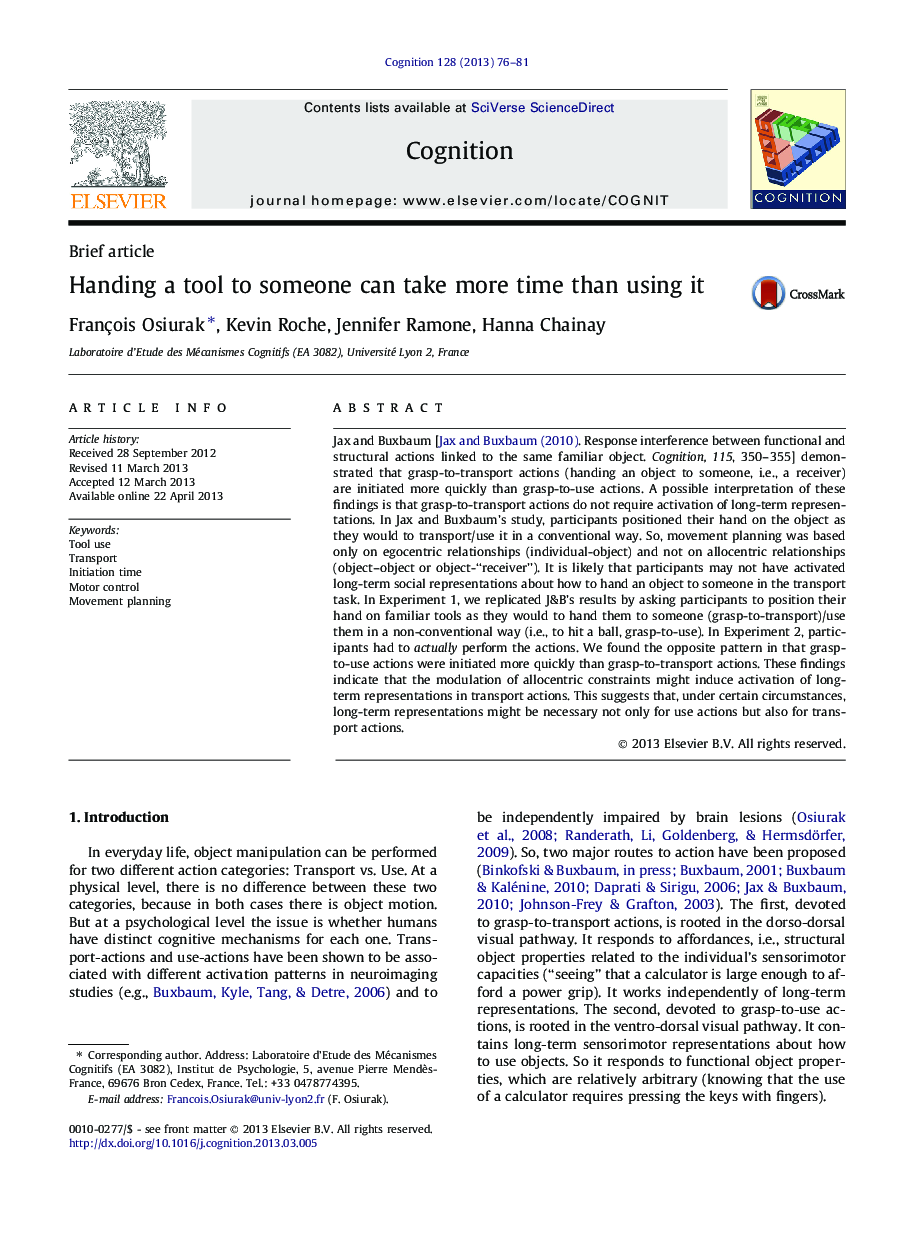| Article ID | Journal | Published Year | Pages | File Type |
|---|---|---|---|---|
| 926781 | Cognition | 2013 | 6 Pages |
Abstract
Jax and Buxbaum [Jax and Buxbaum (2010). Response interference between functional and structural actions linked to the same familiar object. Cognition, 115, 350-355] demonstrated that grasp-to-transport actions (handing an object to someone, i.e., a receiver) are initiated more quickly than grasp-to-use actions. A possible interpretation of these findings is that grasp-to-transport actions do not require activation of long-term representations. In Jax and Buxbaum's study, participants positioned their hand on the object as they would to transport/use it in a conventional way. So, movement planning was based only on egocentric relationships (individual-object) and not on allocentric relationships (object-object or object-“receiver”). It is likely that participants may not have activated long-term social representations about how to hand an object to someone in the transport task. In Experiment 1, we replicated J&B's results by asking participants to position their hand on familiar tools as they would to hand them to someone (grasp-to-transport)/use them in a non-conventional way (i.e., to hit a ball, grasp-to-use). In Experiment 2, participants had to actually perform the actions. We found the opposite pattern in that grasp-to-use actions were initiated more quickly than grasp-to-transport actions. These findings indicate that the modulation of allocentric constraints might induce activation of long-term representations in transport actions. This suggests that, under certain circumstances, long-term representations might be necessary not only for use actions but also for transport actions.
Related Topics
Life Sciences
Neuroscience
Cognitive Neuroscience
Authors
François Osiurak, Kevin Roche, Jennifer Ramone, Hanna Chainay,
